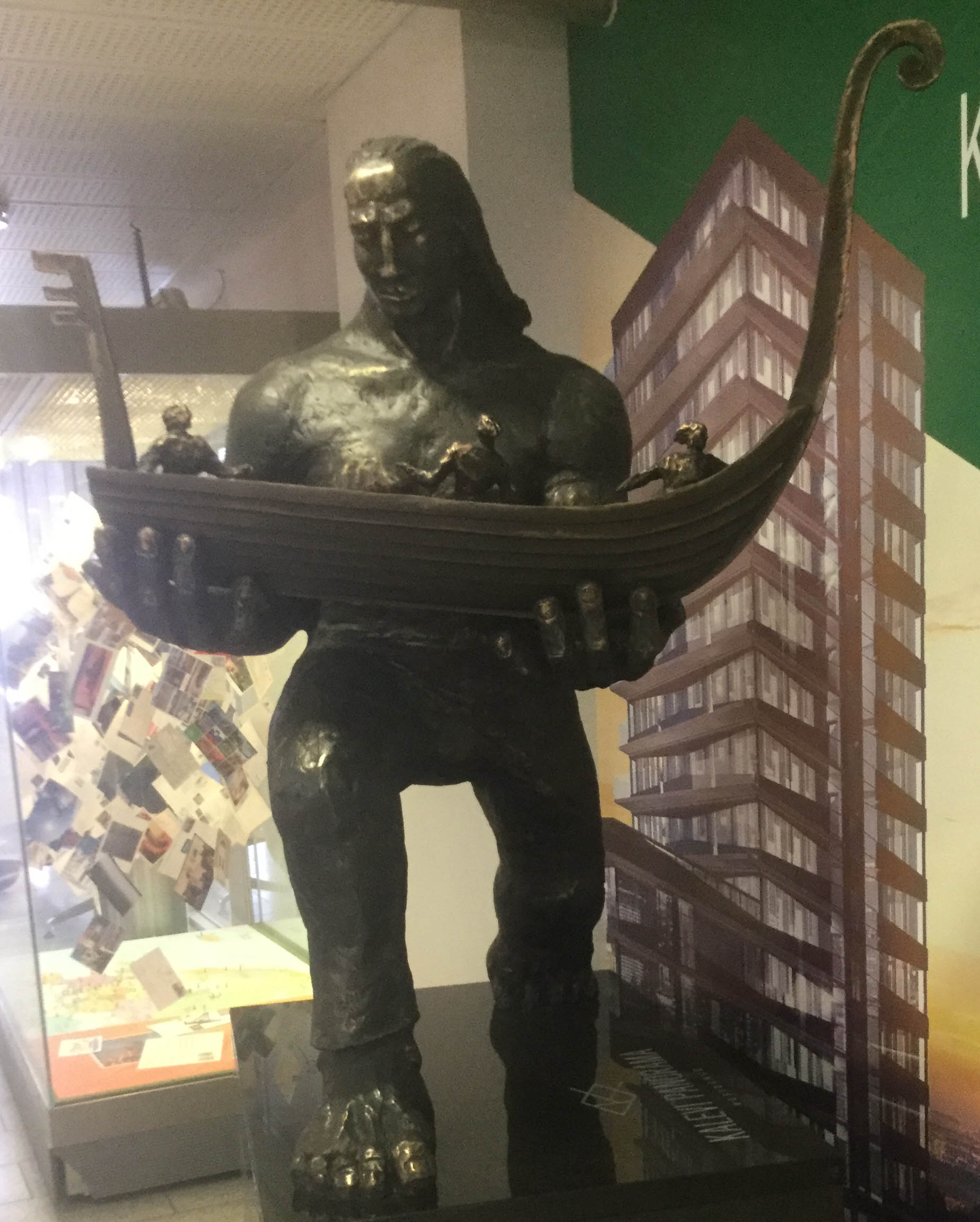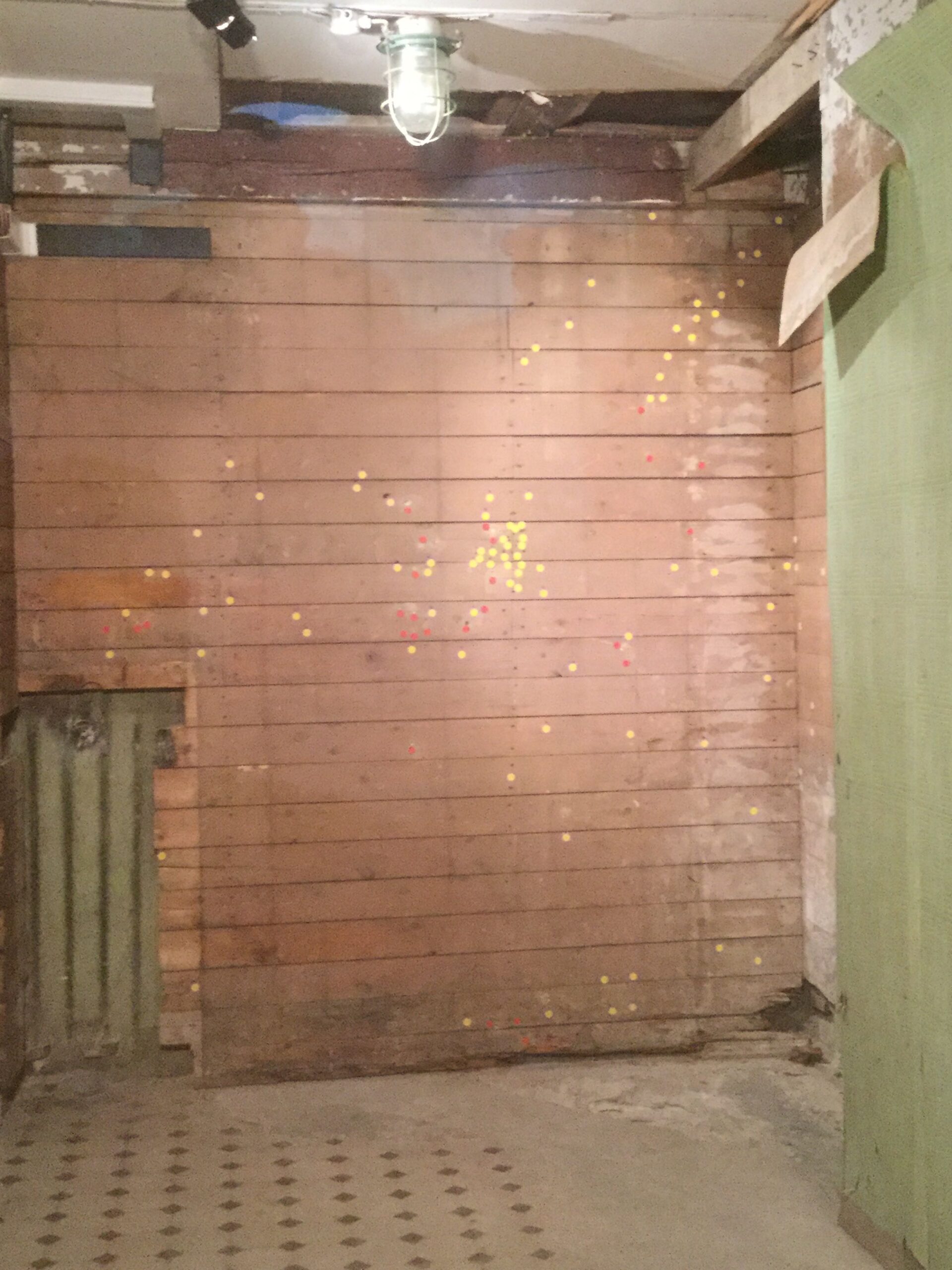Kalevipoeg’s Return, Sculptor Tauno Kangro
The hero of the Estonian epic poem Kalevipoeg wanted to travel to the ends of the Earth.
On his travels, he understood that the world is round and there is no place like home.
Go and look beyond the horizon.
Experience the world and gain wisdom from the knowledge that home is the place where you can always return to.
We are all wanderers with senses open and love for our home in our hearts.
Have a great journey and a safe return.
These were the words etched into the side of a dark marble statue located in the Tallinn airport. It was arresting not only for the fact that a giant marble statue was in the middle of a futuristic and thoughtful airport (they had a lending library,) but because it was as if it were describing my present circumstances. I realized then that most of the great epics, such as the Oddessy, the Alchemist, and of course the ancient Estonian epic poem Kalevipoeg, involved incredible journeys all with the hero returning home with great tales to tell. And I got that in spades in Tallinn.
My introduction to this tiny Baltic state was the 1992 seminal epic Encino Man. It was a Pauley Shore vehicle and introductory role of Brendan Fraiser and explored the modern world through the eyes of a recently reanimated caveman. While he was negotiating this new and marvelous world, unaware of the current social mores, Shore’s character explained that the reason he lunged towards a woman’s breasts, savagely ate household pets, and was mesmerized by fire on demand was due to the fact he was from Estonia. It only furthered my resolve to visit when I learned that the American Beauty herself, Mena Suvari (upon whom I had a massive crush in my late teens), was of Estonian descent.
Another anecdote was shared with me by my step-brother. He served as a United States Marine during the 1990s as a helicopter mechanic. He and his team were invited to Estonia to help train their armed forces on helicopter repair as they just found themselves newly independent. He came to a base that was very much in need of a paint job. Not due to the Soviet decrepitude that seems to haunt all of their buildings, but written on the wall in permanent marker was the sequence of American cities that would be destroyed when the inevitable nuclear conflict began. He understood that had he been there just a few years before, he would have been in mortal danger.
Walking the streets of Tallinn, I felt as though I was transported to not just another time, but a synthesis of the past, present, and future. Obviously, with its picturesque streets and ancient buildings, Tallinn was like a living historical fairytale. But the fairytale took a long and dark turn at the dawn of the 20th Century that almost lasted until its dusk. The future of Tallinn is not only a technology hub but their scope of time is larger than much younger nations. Estonia is already imagining its 500th year of independence, in the year 2418, as it is on its walk of fame already in bronze.
However, the most notable was the present; my story was being written on the streets of this beautiful city. Some strange, some hilariously odd, and others just so. It was these moments that I would cherish the rest of my life. I looked beyond the horizon. I was experiencing the world and gaining wisdom. But most importantly, through this statue’s Estonian eloquence, I would bring the entire world into my mind, my heart, and eventually my home.



